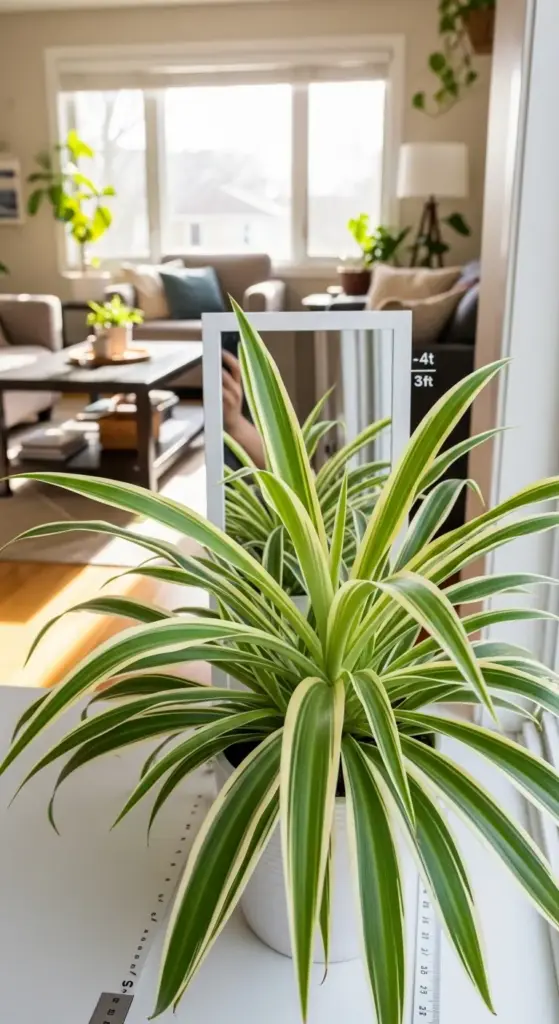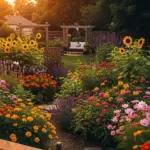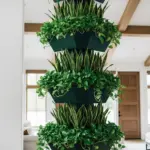Secret #2 – Strategic Light Positioning for Maximum Variegation

I used to think my spider plant was just genetically boring. You know, one of those mostly green ones with barely visible cream stripes that looked more like lighting tricks than actual variegation.
Then I discovered the magic of strategic positioning and everything changed. My plain Jane spider plant transformed into this gorgeous striped beauty that people literally stop and stare at!
The 3-Foot Rule That Changed Everything
Here’s what blew my mind – bright indirect light doesn’t mean “somewhere near a window.” It means exactly 3-4 feet away from an east or west-facing window.
I had mine sitting right on the windowsill for months. Big mistake. The direct sun was actually washing out the variegation and making the leaves look pale and washed out.
When I moved it to my coffee table about 3 feet from my east window, the cream striping became so much more defined within just two weeks. It was like someone turned up the contrast!
The Weekly Rotation Game-Changer
This tip came from my plant-obsessed friend Sarah, and honestly, I thought she was being extra. But rotating your spider plant 90 degrees every week creates the most incredible color patterns.
See, plants naturally lean toward light sources. When you keep rotating them, every leaf gets equal light exposure, which means more consistent variegation throughout the entire plant.
I set a phone reminder for “Spider Sunday” – every Sunday I give mine a quarter turn. The difference in color intensity is honestly dramatic.
Why North Windows Are Overrated
Everyone always says north-facing windows are perfect for houseplants, but I’m here to tell you that’s not always true for spider plants. North light is too gentle for maximum variegation.
My north window spider plant looked healthy but boring. The cream stripes were barely there. It was like looking at a plant through a gray filter.
East windows give you that perfect morning sun intensity without the harsh afternoon rays. West windows work too, but you might need to move your plant back an extra foot.
The Mirror Trick That Sounds Crazy But Works
Okay, this one makes me sound like a plant witch, but hear me out. I placed a small mirror behind my spider plant to reflect more natural light onto the back leaves.
The results were insane. The leaves that used to be hidden in shadow developed the same gorgeous striping as the front-facing ones.
You can also use white poster board or even a white ceramic pot as a light reflector. Anything that bounces that precious light back onto your plant will enhance the variegation.
My Biggest Lighting Mistake
I got so excited about the mirror trick that I went overboard and surrounded my poor plant with three mirrors. Talk about plant torture! The leaves started getting bleached and the tips turned brown from too much reflected light.
One small mirror or white surface is plenty. Less is definitely more when it comes to light amplification.
Also, don’t move your plant around constantly trying to find the “perfect” spot. Give it at least 3-4 weeks in one location before deciding if it’s working.
Ready to Multiply Your Success?
Now that your spider plant is showing off those gorgeous stripes, you’re probably noticing more plantlet production too. But here’s where most people mess up – they try to propagate those babies way too early.
The timing of when you separate those plantlets can make or break your propagation success rate. In the next section, I’m sharing the root division technique that literally doubled my plant collection in just two months!









GIPHY App Key not set. Please check settings